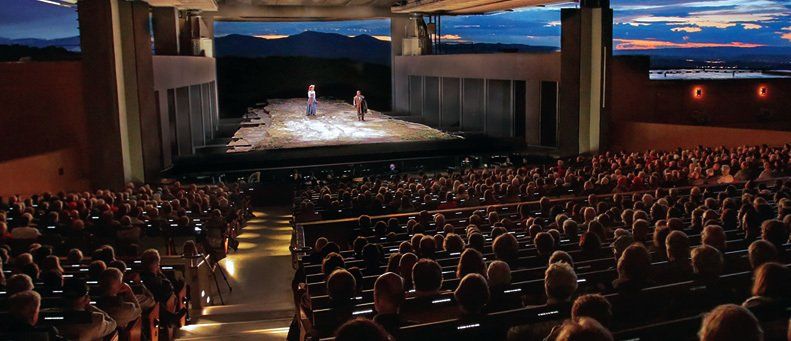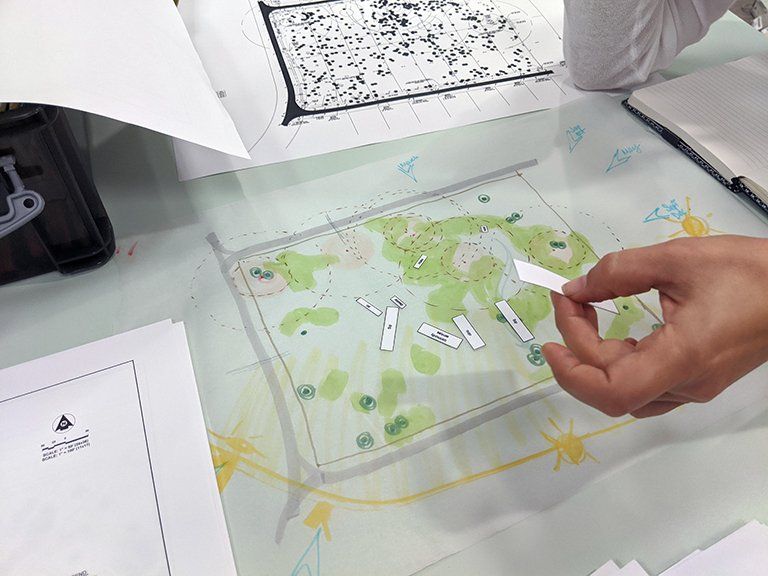Performing Arts Venues
How performing arts venues are responding to the COVID crisis
Now that the reality of COVID-19 has settled in and performing arts venues are realizing the impact this pandemic will have on their organization’s future, we need to begin thinking about how to navigate through and ultimately over this hurdle.
Gaining insight from leaders in the performing arts
What are the opportunities presented by this situation today and what opportunities will exist for the cultural arts world after a vaccine is found?
As an architect who has worked on numerous performing arts spaces, including theaters, rehearsal halls, outdoor venues and large event spaces, I recently listened in on a webinar through USITT about the status of performing arts organizations around the globe. We are also currently working with local performing arts organizations on projects and the discussion regarding how to deal with these difficult times repeatedly surfaces.
There are a variety of different approaches worldwide, both for musical venues, theatrical venues, local theaters and nationally recognized theaters. They range from specific architectural modifications to creative, out-of-the-box ideas utilizing social media and virtual technology.
Social Distancing
This will be a difficult challenge for any theater or performing arts venue. By keeping mandated distances, capacities will reduce to only 25% and that will not work from a revenue standpoint. Theaters and performing arts venues will need to come up with alternative ideas to generate income and sustain their operation.
Mobile Venues
Locally, our Sarasota Opera came up with an ingenious idea to take their opera performances on the road. Driving around on a flatbed truck, giving different audiences an operatic experience, has taken the once stationary concept of listening to opera in a theater to a whole new level. Adding a simple pop-up scene in the foreground or behind the singers on the truck transports both the singers and the audience back to the streets of Italy or that opera’s origin.
Other organizations can do the same, whether theatrical, ballet or orchestral. Rather than bringing patrons to a building, now the cultural arts take their performances to the audience, changing their approach to the industry.
By utilizing social media to announce these activities, you can create interest and buzz to ensure that audiences know when and where things are happening. In addition, partnering with other organizations or sponsors to co-brand such events enhances the results. We’re all in this together and the more collaboration now, the more success later.
Education
One of the more interesting ideas presented in this international webinar was from a fascinating woman in Nigeria who owns a local theater. Her company began offering online courses, (requiring a subscription/payment) to teach people how to build scenery, play an instrument, or even act and sing.
This wonderful approach has the potential to broaden the reach of an otherwise local organization to a worldwide audience.
This is just one example of the interesting opportunities that COVID-19 has brought to our lives.
Any type of arts organization can do this and whether it gains a local presence, continuing the interest of its faithful members, or reaches a broader audience, expanding their patronage and increasing their visibility, it’s a win-win for everyone.
YouTube
YouTube is a highly popular platform that billions of people often turn to for education and inspiration. It’s also a very popular platform for artists, musicians, and performers who use it to connect with existing and potential audiences through video.
If you are creative in your videos and posts and you give people that are already fans or potential new fans a reason to watch your performances, there are lucrative opportunities for any size operation to have access to a worldwide audience.
Probably the most positive result of this horrific pandemic is the realization that, pre-COVID, what we thought was global was only scratching the surface through channels like YouTube, Zoom, Go To Meeting, Microsoft Teams and other similar platforms. Venues are not just given a voice, but now are able to connect people and organizations from around the world with one another.
Community Challenge
Inspire and integrate your community with a local challenge to create monologues, one-act plays, favorite operatic songs or Broadway acts. Have patrons submit them so that they are engaged and then post them for your members to view.
The goal now is to stay in front of people, stay engaged and stay relevant. Though not necessarily revenue generating, it will generate interest and show an effort that your organization cares and is at the forefront of creativity and credibility.
Outdoor Theaters
Without question, there will be a movement towards outdoor venues. Not only does this make sense from a health standpoint, but it creates another type of experience, previously overlooked by patrons and organizations alike.
Outdoor structures provide flexibility for the organization to accommodate patron’s needs and increases the opportunity to present shows to a larger audience and accessing new interested people previously unaware of the group’s cultural benefits.
Typically, outdoor venues can be less expensive, which expands the patron demographic with a more diverse group of people while spreading the impact of cultural arts in a community.
Though weather will be a factor, architects will need to consider temporary fixes to existing outdoor structures or when designing a new place. Attention must be given to architecturally treating an open roof while allowing participants to enjoy different types of performances. Two examples that come to mind are the Globe London and the Santa Fe Opera (pictured).
Interior Design
There will now be a need for more sanitary measures throughout the interior of the space. We want to avoid ugly, plastic dispensers haphazardly installed on walls that lessen a building’s aesthetic sophistication. Visibility of these stations is key, but they can be designed with some thought.
Whether recessed into walls or surface mounted with additional architectural detail, stations for hand sanitizing or washing can be creative and add aesthetic enhancement throughout the building.
Seating
I predict that theaters will increase private booths over general seating. Long rows of seats that require people to cross over and enter into personal space are avoidable. Additional aisles can shorten rows of seats giving patrons a better comfort level for attending these events.
A clear circulation pattern for entering and exiting can be worked into the design to keep people from, again, crisscrossing within a narrow aisle width. We follow strict circulation patterns in museums, some restaurants and other spaces that require a clear traffic pattern order. Theaters can have the same approach to their circulation patterns and design of the interior spaces.
This may also impact the number of entry and exit points in a building, allowing opportunity for people to safely distance themselves when entering and exiting larger populated venues.
Conclusion
Performing arts organizations have a challenging road ahead. A local executive director is currently surveying his patrons to find out what aspects of a “new normal” give the audience a comfort level moving forward. Masks, sitting next to someone, being in an interior air conditioned space, being in an exterior space open to the elements; these are all questions currently being asked. These are all interesting topics that must be discussed in order to figure out how performing arts organizations can sustain themselves into the future.
As discussed in this blog, now is not the time to sit back and wait for a vaccine. It is not the time to simply hope that people will come back to watch shows. Rather, it is an opportunity to think outside of the box and generate ideas that will strengthen your local ties to your committed patrons, broaden your connections with other communities and creatively invent potentially lucrative, revenue-building ideas to keep the coffers filled during these difficult times.
Though the importance of cultural arts on society may not always get appropriate credit and people may not always understand its impact on a global stage, now more than ever our performing arts organizations must figure out how to keep culture in our lives in order to keep us grounded, to keep us engaged, and to better our society.
From our standpoint, it’s exciting to think about the opportunities that exist for performing arts organizations. I’d love to hear from readers as to what they’re learning and finding in their own experiences with their local theaters, operas, orchestras and culturally diverse companies. To share your comments, email barron@theschim.com. Also, don’t forget to subscribe to our newsletter, Methods and Madness, for more insight, information, and visual stimulation for all things architecture and interior design related.





